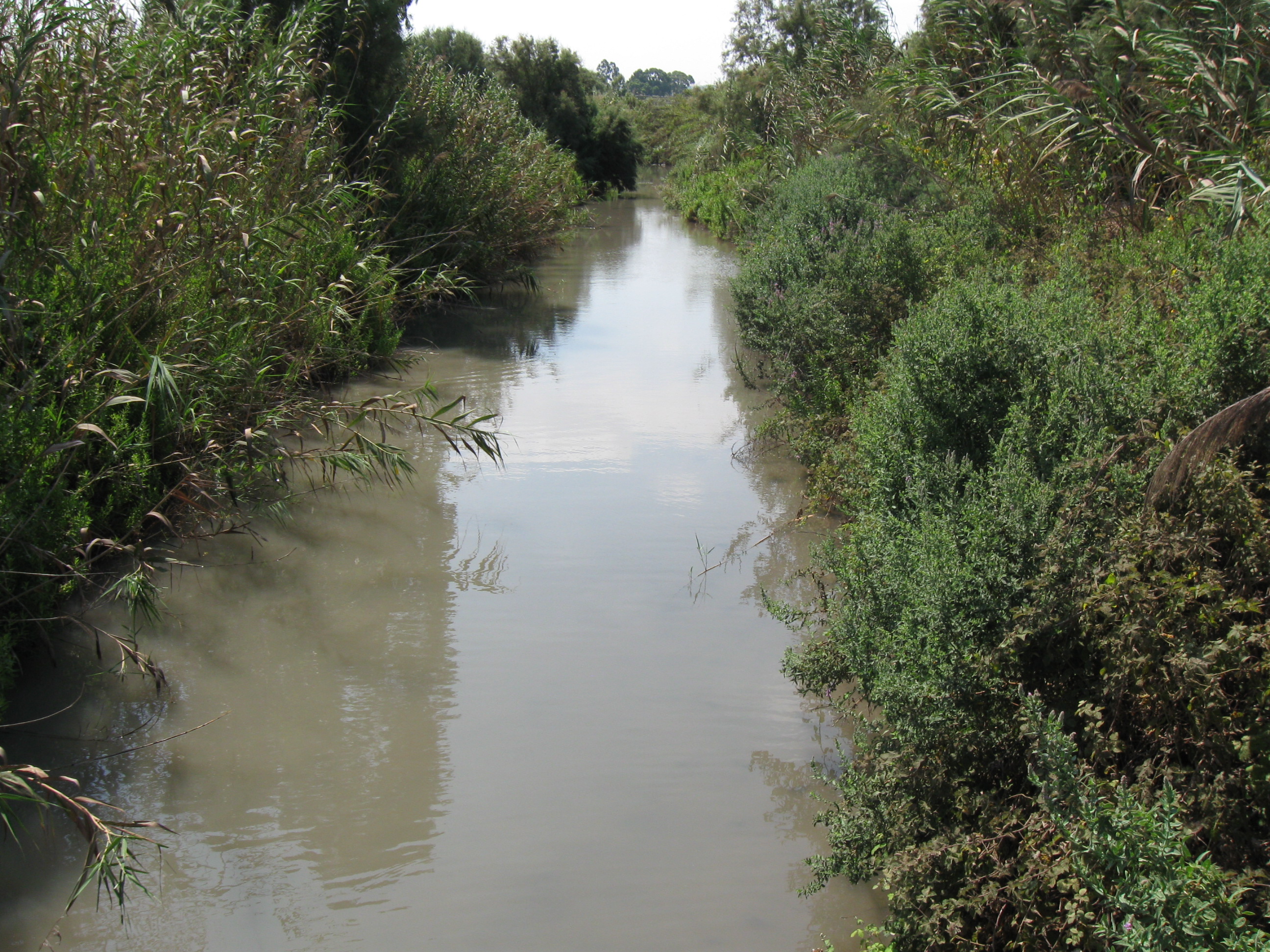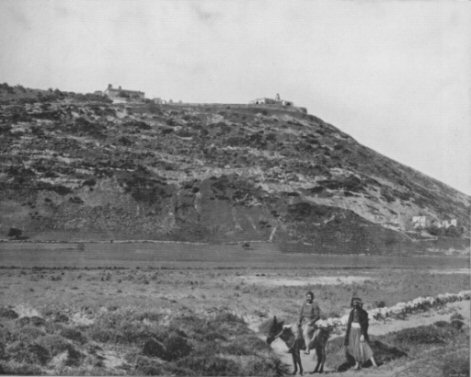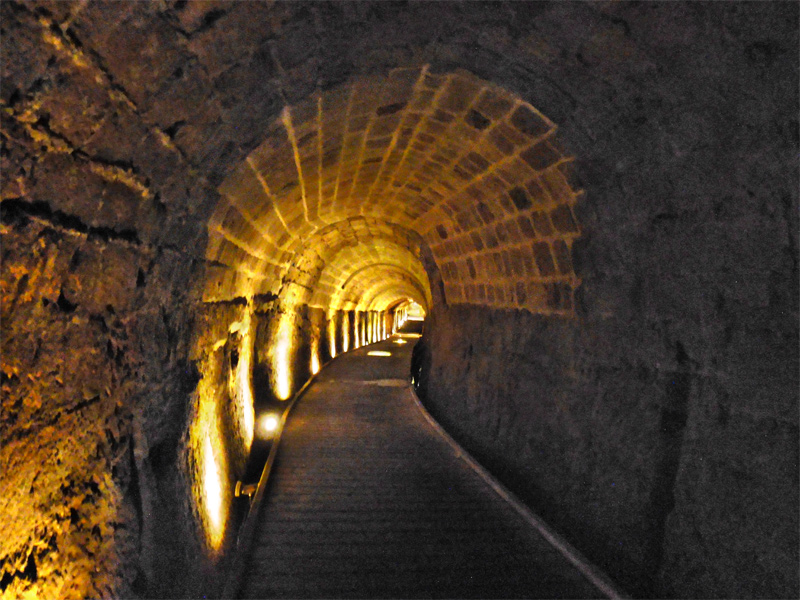|
Na'aman River
The Na'aman (, ''Nahal Na'aman'') or Na'mein River (, ''Nahr Na'mein'') is a stream in northwestern Israel. To the ancient writers Pliny, Tacitus, and Josephus, it was known as the Belus (Latin) or Belos River (, ''Bē̂los'') of Phoenicia. Course The Na'aman River originates from springs near Ein Afek (primarily Ein Nymphit) and flows through the Zebulun Valley from south to north before emptying into the Bay of Haifa (formerly Bay of Acre) south of Acre (Akko) on the Mediterranean Sea. It previously flowed directly south of Tel Akko (the site of ancient Acre) but has shifted over time to be about away. The En Afek Nature Reserve near the Haifa Bay suburb of Kiryat Bialik, is the last remnant of the Nahal Na'aman wetlands. History Once known as Belus or Belos, the river is mentioned by Isidore of Seville. According to the legend, this is where glass-making was invented. Tacitus also mentions glassmaking at the Belus. Pliny the Elder (''Natural History'', 5.19), usin ... [...More Info...] [...Related Items...] OR: [Wikipedia] [Google] [Baidu] |
Afek223
Afek or Aphik () may refer to: Places in the biblical Land of Israel *Aphek (biblical) refers to a number of sites with the same name mentioned in the Bible *Aphik (Asher) one of the biblical sites belonging to the Tribe of Asher **Aphaca, a city in classical Syria believed by some to be the Asherite city: ***Afka, a modern town at the site in Lebanon **Tel Afek, a site located near Haifa believed by some to be the Asherite city ***Afek, Israel, a kibbutz located at the tell near Haifa *Another site known as Tel Afek, classical Antipatris, near Petah Tikva and Rosh HaAyin * Migdal Afek, Latin name Aphek Turris, also near Rosh HaAyin *A site in the Golan Heights: **Fiq, Syria, a former Syrian village **Afik, a current Israeli settlement and kibbutz there ** Fiq Airfield, a small civilian airfield near the settlement/kibbutz *Afikim, a kibbutz in the Galilee nearby, but unrelated to the Golan Heights site Other uses * Afek (surname), Hebrew-language surname *Afek (mythology), a cultu ... [...More Info...] [...Related Items...] OR: [Wikipedia] [Google] [Baidu] |
Haifa Bay
The Bay of Haifa or Haifa Bay (, ''Mifratz Heifa''), formerly Bay of Acre, is a bay along the Mediterranean coast of Northern Israel. Haifa Bay is Israel's only natural harbor on the Mediterranean. ''Haifa Bay'' also refers one of Haifa's nine quarters, covering the overwhelmingly industrial area northeast of Downtown and south of Kiryat Hayim. Geography Fed by the Kishon River, the cities of Haifa and Acre, Israel, Acre mark its southern and northern capes, while its centre is lined with dunes and the suburban Krayot neighbourhoods. Mount Carmel rises from the southern edge, while the mountains of the Western Galilee run up to the shore at the northern boundary. The Zvulun Valley, a coastal plain, runs 14 km along the coast of the bay between these mountainous boundaries. According to Palaeogeography, paleogeographic studies, 3,000 to 3,500 years ago Haifa Bay was larger and extended as far as the area of present-day Kibbutz Yagur. The estuary of Kishon River was wider, an ... [...More Info...] [...Related Items...] OR: [Wikipedia] [Google] [Baidu] |
Baal
Baal (), or Baʻal, was a title and honorific meaning 'owner' or 'lord Lord is an appellation for a person or deity who has authority, control, or power (social and political), power over others, acting as a master, chief, or ruler. The appellation can also denote certain persons who hold a title of the Peerage o ...' in the Northwest Semitic languages spoken in the Levant during Ancient Near East, antiquity. From its use among people, it came to be applied to gods. Scholars previously associated the theonym with solar god, solar cults and with a variety of unrelated patron deity, patron deities, but inscriptions have shown that the name Ba'al was particularly associated with the storm god, storm and fertility god Hadad and his local manifestations. The Hebrew Bible includes use of the term in reference to various Levantine mythology, Levantine deities, often with application towards Hadad, who was decried as a false god. That use was taken over into Christianity and Isl ... [...More Info...] [...Related Items...] OR: [Wikipedia] [Google] [Baidu] |
Mount Carmel
Mount Carmel (; ), also known in Arabic as Mount Mar Elias (; ), is a coastal mountain range in northern Israel stretching from the Mediterranean Sea towards the southeast. The range is a UNESCO biosphere reserve. A number of towns are situated there, most notably Haifa, Israel's third largest city, located on the northern and western slopes. Etymology The word ''karmel'' ("garden-land") has been explained as a compound of ''kerem'' and ''el'' meaning "vineyard of El (deity), God" or a clipping of ''kar male,'' meaning "full kernel." Martin Jan Mulder suggested a third etymology, that of ''kerem + l'' with a lamed wiktionary:sufformative, sufformative, meaning only "vineyard", but this is considered unlikely as evidence for the existence of a lamed sufformative is weak. In Song of Songs 7:6, ''karmel'' is generally interpreted as a color, perhaps "crimson" or "yellow". suggests connecting it to the yellow "''karmel'' lily" mentioned by the Jerusalem Talmudy. Sukkah 3:6) in t ... [...More Info...] [...Related Items...] OR: [Wikipedia] [Google] [Baidu] |
Natural History (Pliny)
The ''Natural History'' () is a Latin work by Pliny the Elder. The largest single work to have survived from the Roman Empire to the modern day, the ''Natural History'' compiles information gleaned from other ancient authors. Despite the work's title, its subject area is not limited to what is today understood by natural history; Pliny himself defines his scope as "the natural world, or life". It is encyclopedic in scope, but its structure is not like that of a modern encyclopedia. It is the only work by Pliny to have survived, and the last that he published. He published the first 10 books in AD 77, but had not made a final revision of the remainder at the time of Pliny the Elder#Death, his death during the Eruption of Mount Vesuvius in 79 AD, AD 79 eruption of Vesuvius. The rest was published posthumously by Pliny's nephew, Pliny the Younger. The work is divided into 37 books, organised into 10 volumes. These cover topics including astronomy, mathematics, geography, ethn ... [...More Info...] [...Related Items...] OR: [Wikipedia] [Google] [Baidu] |
Glass
Glass is an amorphous (non-crystalline solid, non-crystalline) solid. Because it is often transparency and translucency, transparent and chemically inert, glass has found widespread practical, technological, and decorative use in window panes, tableware, and optics. Some common objects made of glass are named after the material, e.g., a Tumbler (glass), "glass" for drinking, "glasses" for vision correction, and a "magnifying glass". Glass is most often formed by rapid cooling (quenching) of the Melting, molten form. Some glasses such as volcanic glass are naturally occurring, and obsidian has been used to make arrowheads and knives since the Stone Age. Archaeological evidence suggests glassmaking dates back to at least 3600 BC in Mesopotamia, Ancient Egypt, Egypt, or Syria. The earliest known glass objects were beads, perhaps created accidentally during metalworking or the production of faience, which is a form of pottery using lead glazes. Due to its ease of formability int ... [...More Info...] [...Related Items...] OR: [Wikipedia] [Google] [Baidu] |
Isidore Of Seville
Isidore of Seville (; 4 April 636) was a Spania, Hispano-Roman scholar, theologian and Roman Catholic Archdiocese of Seville, archbishop of Seville. He is widely regarded, in the words of the 19th-century historian Charles Forbes René de Montalembert, as "the last scholar of the ancient world". At a time of disintegration of classical culture, aristocratic violence, and widespread illiteracy, Isidore was involved in the conversion of the Arianism, Arian Visigothic kings to Chalcedonian Christianity, both assisting his brother Leander of Seville and continuing after Leander's death. He was influential in the inner circle of Sisebut, Visigothic king of Hispania. Like Leander, he played a prominent role in the Councils of Toledo and Seville. His fame after his death was based on his ''Etymologiae'', an etymology, etymological encyclopedia that assembled extracts of many books from classical antiquity that would otherwise have been lost. This work also helped to standardise the use ... [...More Info...] [...Related Items...] OR: [Wikipedia] [Google] [Baidu] |
Kiryat Bialik
Kiryat Bialik (, also Qiryat Bialik) is a city in the Haifa District in Israel. The city was established on July 18, 1934, during the Fifth Aliyah. It is one of the five Krayot suburbs to the north of Haifa. In it had a population of . The city was named after the poet Hayim Nahman Bialik. History In 1924, Ephraim and Sabina Katz, who had Romanian Jews in Israel, immigrated to Mandatory Palestine from the Kingdom of Romania, were the first Jews in modern times to settle in the Zevulun Valley along the Haifa Bay. Their farm was destroyed in the 1929 Palestine riots. The one house that survived the riots, Beit Katz, was bequeathed to Kiryat Bialik in 1959 and designated for public use. The town of Kiryat Bialik was founded in July 1934 by a group of German Jewish immigrants who had received a plot of land from the Jewish National Fund. The residents were mainly free professionals, doctors, engineers and lawyers who lived in private homes with gardens. During World War II, Kiryat ... [...More Info...] [...Related Items...] OR: [Wikipedia] [Google] [Baidu] |
En Afek Nature Reserve
The Ein Afek Nature Reserve (also En Afek, En Afeq, Ain Afek) is a nature reserve in the Acre Valley within the Zvulun Valley, Israel. It covers the swamps and springs at the source of the Na'aman River, as well as the Tel Afek archaeological site. The origin of the name is the biblical city of Afek. The nature reserve, declared in 1979, covers 366 dunams. An additional 300 dunams were declared in 1994. The highlights of the park include the Crusader fortress and the natural water canals and lake, which draw their waters from the year-long flowing springs of Afek, which are the source of the Naaman river. In 1996 it was recognized as a Ramsar site. It preserves the remnants of the vast swamps in the Acre Valley, drained and pumped out. [...More Info...] [...Related Items...] OR: [Wikipedia] [Google] [Baidu] |
Mediterranean Sea
The Mediterranean Sea ( ) is a sea connected to the Atlantic Ocean, surrounded by the Mediterranean basin and almost completely enclosed by land: on the east by the Levant in West Asia, on the north by Anatolia in West Asia and Southern Europe, on the south by North Africa, and on the west almost by the Morocco–Spain border. The Mediterranean Sea covers an area of about , representing 0.7% of the global ocean surface, but its connection to the Atlantic via the Strait of Gibraltar—the narrow strait that connects the Atlantic Ocean to the Mediterranean Sea and separates the Iberian Peninsula in Europe from Morocco in Africa—is only wide. Geological evidence indicates that around 5.9 million years ago, the Mediterranean was cut off from the Atlantic and was partly or completely desiccation, desiccated over a period of some 600,000 years during the Messinian salinity crisis before being refilled by the Zanclean flood about 5.3 million years ago. The sea was an important ... [...More Info...] [...Related Items...] OR: [Wikipedia] [Google] [Baidu] |
Acre, Israel
Acre ( ), known in Hebrew as Akko (, ) and in Arabic as Akka (, ), is a List of cities in Israel, city in the coastal plain region of the Northern District (Israel), Northern District of Israel. The city occupies a strategic location, sitting in a natural harbour at the extremity of Haifa Bay on the coast of the Mediterranean's Levantine Sea. In the Village Statistics, 1945, 1945 census Acre's population numbered 12,360; 9,890 Muslims, 2,330 Christians, 50 Jews and 90 classified as "other".Department of Statistics, 1945, p4Government of Palestine, Department of Statistics. ''Village Statistics, April, 1945.'' Quoted in Hadawi, 1970, p40 Acre Prison, Acre's fort was converted into a jail, where members of the Jewish underground were held during their struggle against the Mandate authorities, among them Ze'ev Jabotinsky, Shlomo Ben-Yosef, and Dov Gruner. Gruner and Ben-Yosef were executed there. Other Jewish inmates were freed by members of the Irgun, who Acre Prison break, brok ... [...More Info...] [...Related Items...] OR: [Wikipedia] [Google] [Baidu] |
Zevulun Regional Council
Zevulun Regional Council (, ''Mo'atza Azorit Zvulun'') is a regional council in the Haifa District of Israel. Founded in 1950, it had a population of 10,900 in 2006. The council borders Mateh Asher Regional Council to the north, Jezreel Valley Regional Council and Shefa-'Amr to the east, Carmel Nature Reserve national park and Kiryat Tiv'on to the south and HaKerayot to the west. Name The name is derived from the Hebrew name "Emek Zevulun", lit. " Zebulun Valley", given by Zionist pioneers to the coastal area stretching along the Bay of Acre, from Acre (Akko) to Haifa, on the incorrect assumption that the tribe of Zebulun once had its territory in this area – this land was part of the allotment of Asher, and is a coastal plain, not a valley. File:עמק זבולון - אזור התעשיה בעמק זבולון.-JNF033511.jpeg, Zevulun industrial zone 1939 File:Zoltan Kluger. Emek Zevulun (Haifa Bay).jpg, Zevulun housing 1937 File:EmekZvulun1.jpg, Zevulun Valley List of ... [...More Info...] [...Related Items...] OR: [Wikipedia] [Google] [Baidu] |






